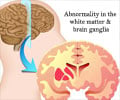Dr Adam Gibson and his research team are all set to improve the already existing brain scanner (MONSTIR).
This brain scanner provides an insight about the functioning of the brain, oxygen supply to it etc. It was developed by University College London (UCL) and was funded by Engineering and Physical Sciences Research Council (EPSRC). <>br>As of now there are 2 different methods available to execute brain scans on babies. One is the usage of Magnetic Resonance Imaging (MRI). The advantage is that it provides us in detail information about the functioning of the brain. The disadvantages of MRI are that they are big and the baby has to be taken to the instrument. Before taking a scan the baby has to be sedated this involves a certain degree of risk.
Secondly is the ultrasound which can be performed at the bed side. The disadvantage is that it does not reveal the functioning of the brain but the anatomy is clearly seen.
This new brain scanner combines the advantages of both MRI & ultrasound. It uses the optical tomographic technique to produce images of the brain.
The mechanism is that it allows light to pass through the tissues and the output is analyzed by a computer terminal.
The light source used is a safe and low intensity laser which produces short flashes of light. The light passes through the brain tissue and is reflected.
This is detected by the 32 detectors present in the helmet placed on the baby’s head. The computer converts it into a 3D image.
Advertisement
With this data it will be very easy to diagnose certain conditions which can be life threatening and provide various treatment options to the premature and new born babies at the emergency units.
Advertisement
This new scanner is thought to reduce the size to one by two of its original size and the deliver results five times faster than the present instrument.
Research on its application in breast imaging, cancer detection and treatment is also done. With the development of new scanner the cost of imaging will be reduced and high quality results will be produced.










